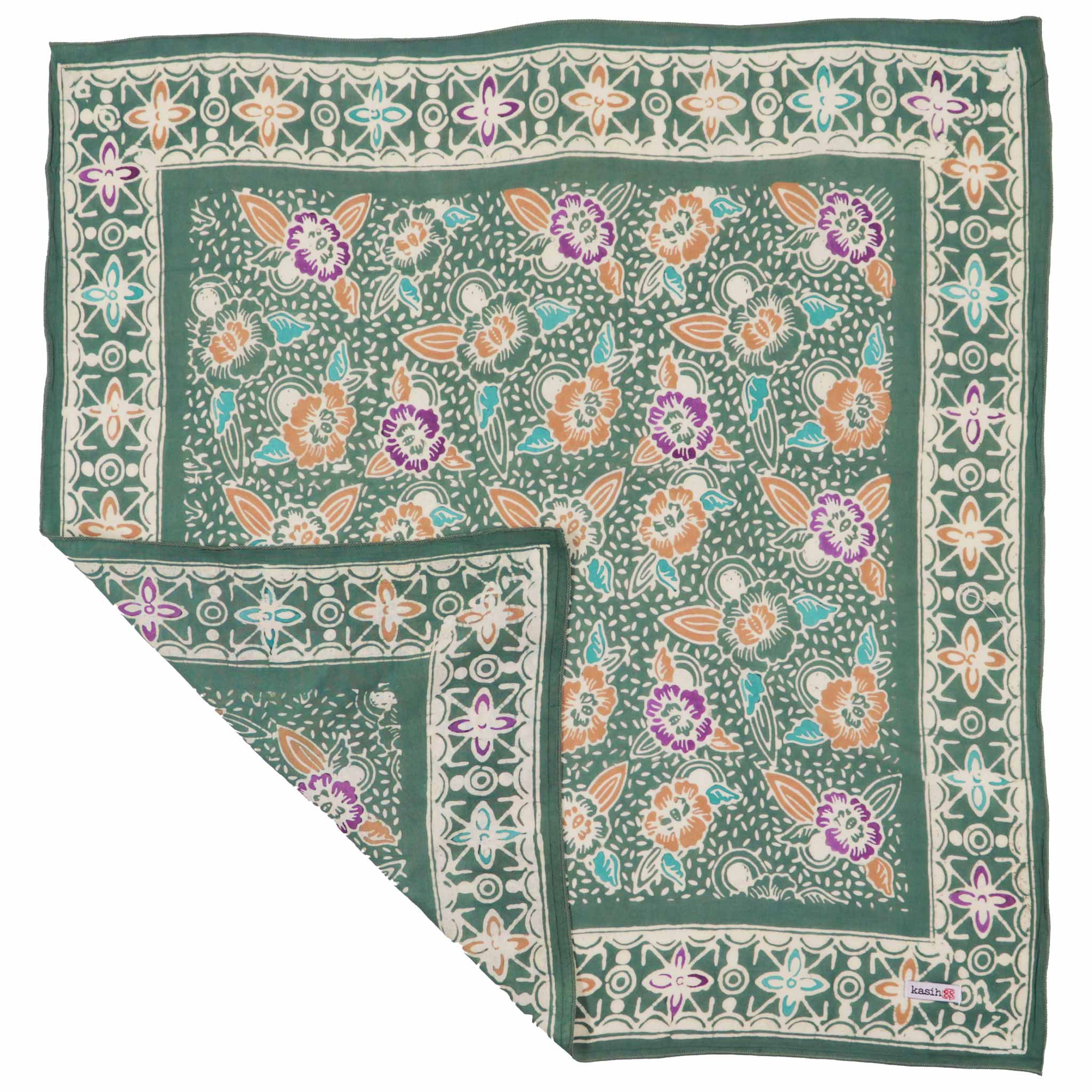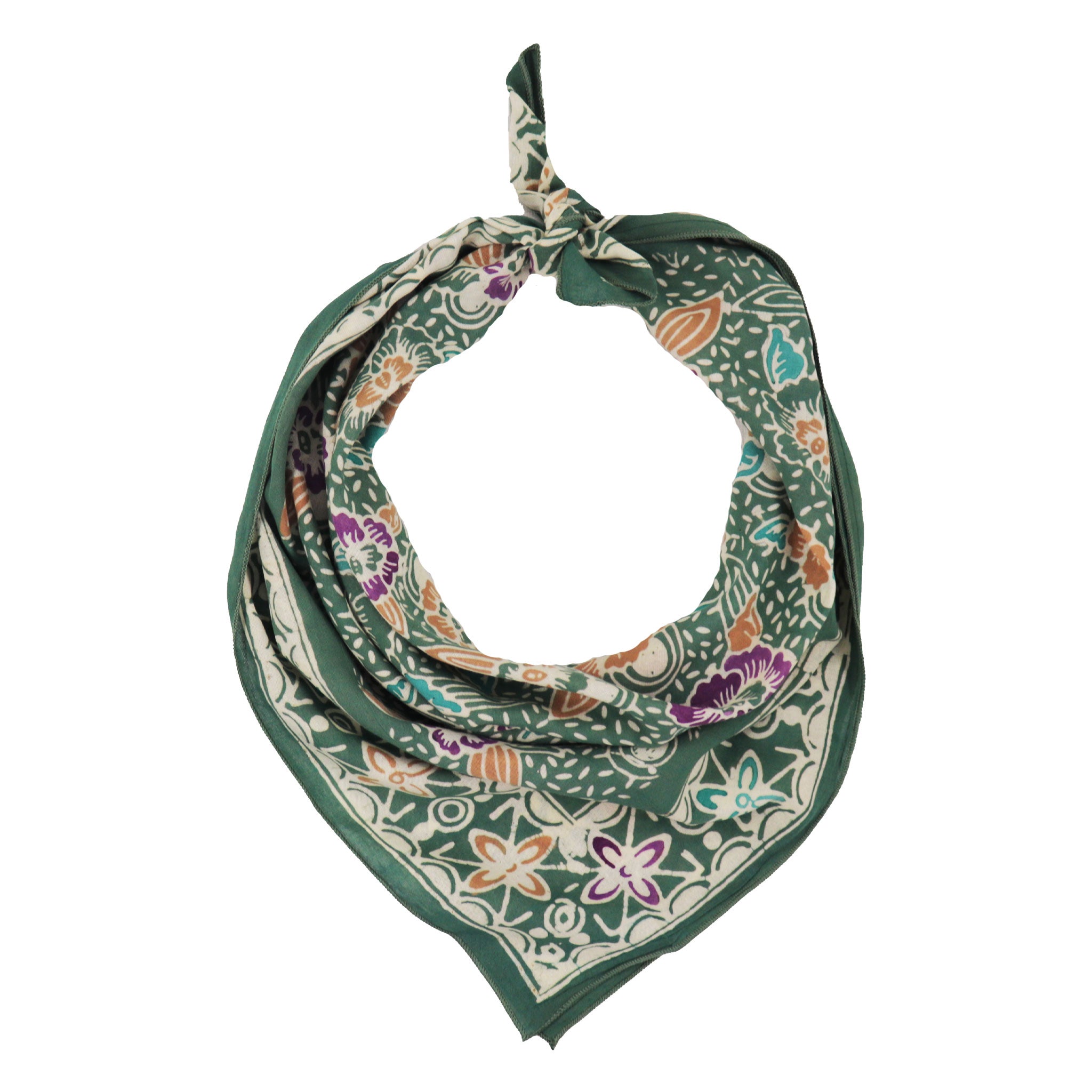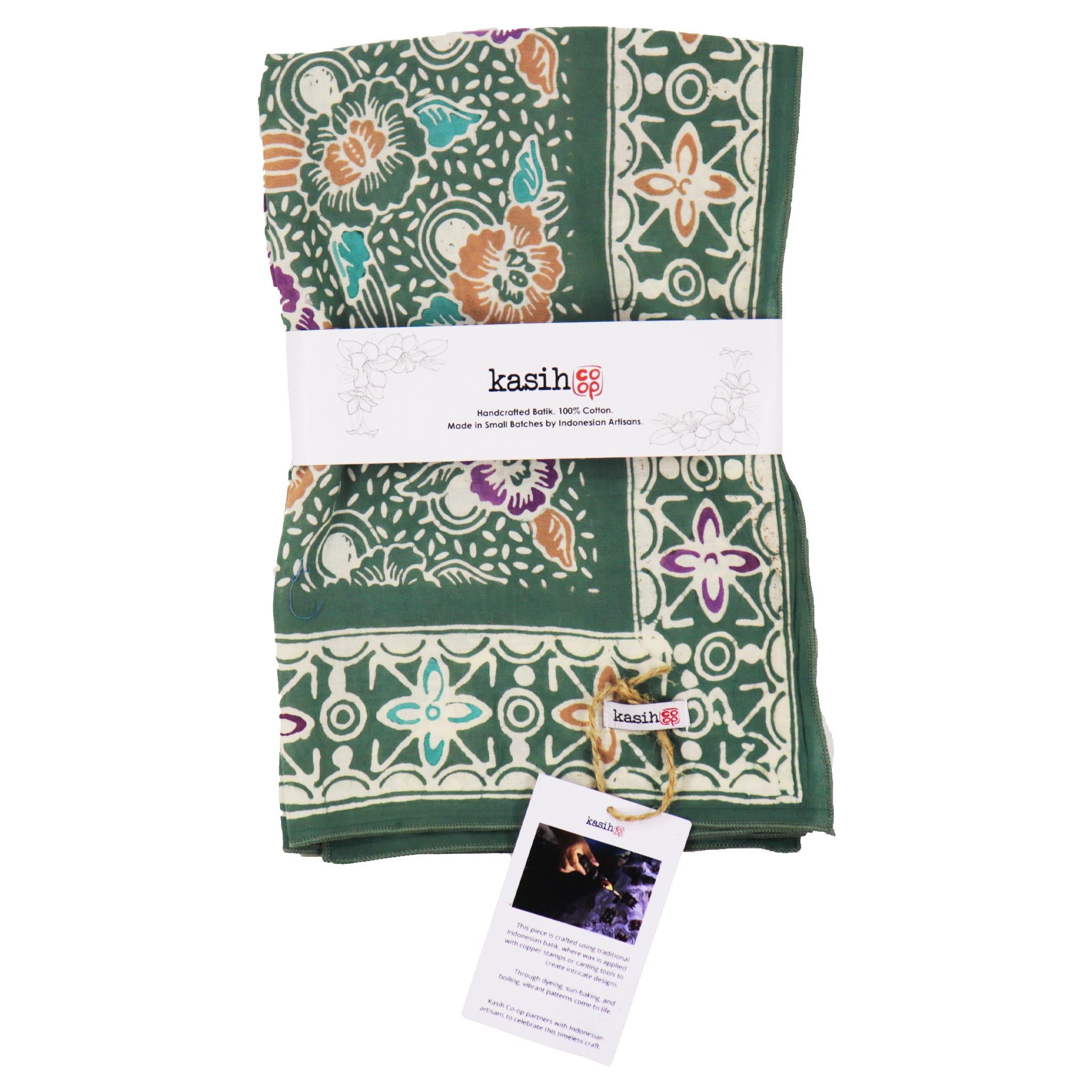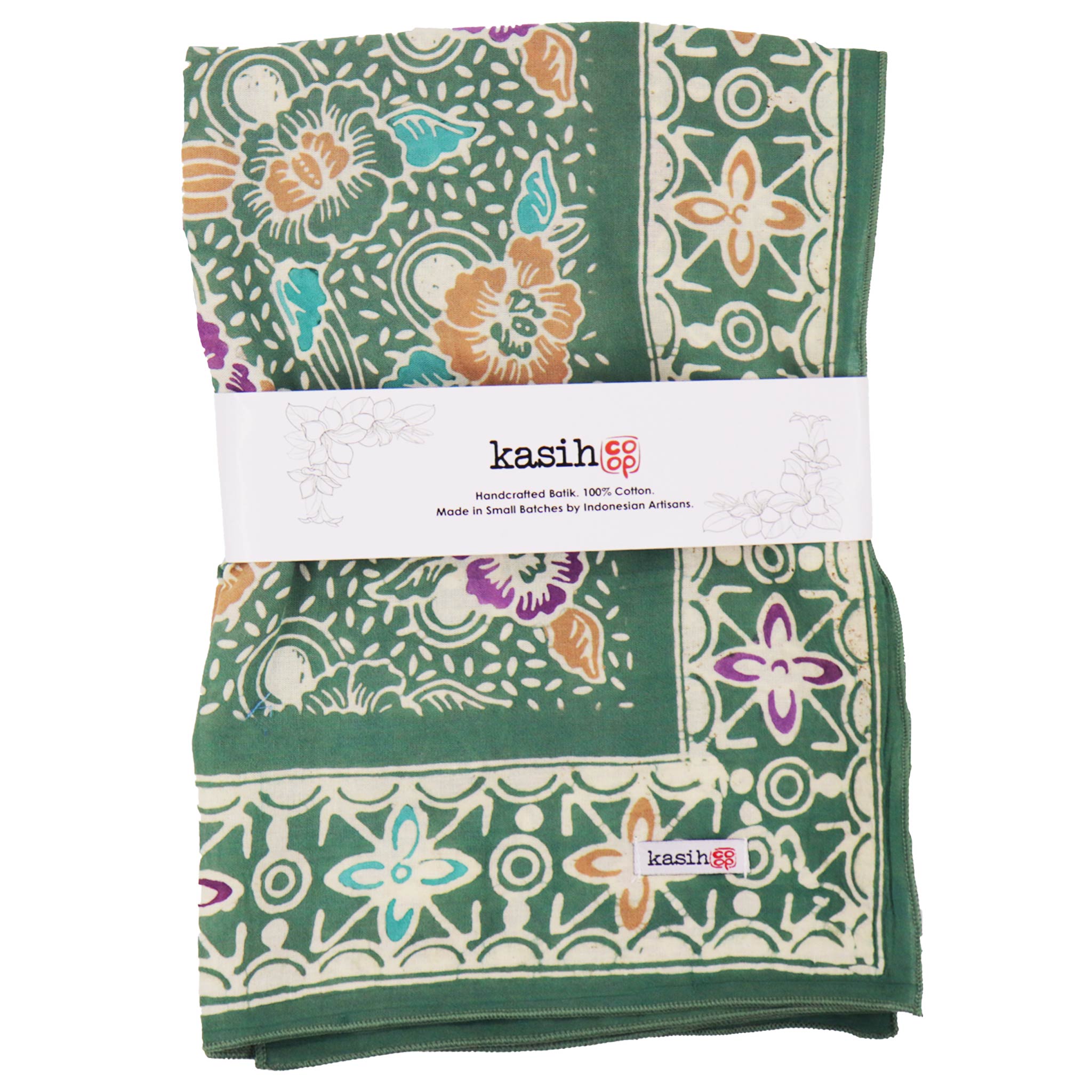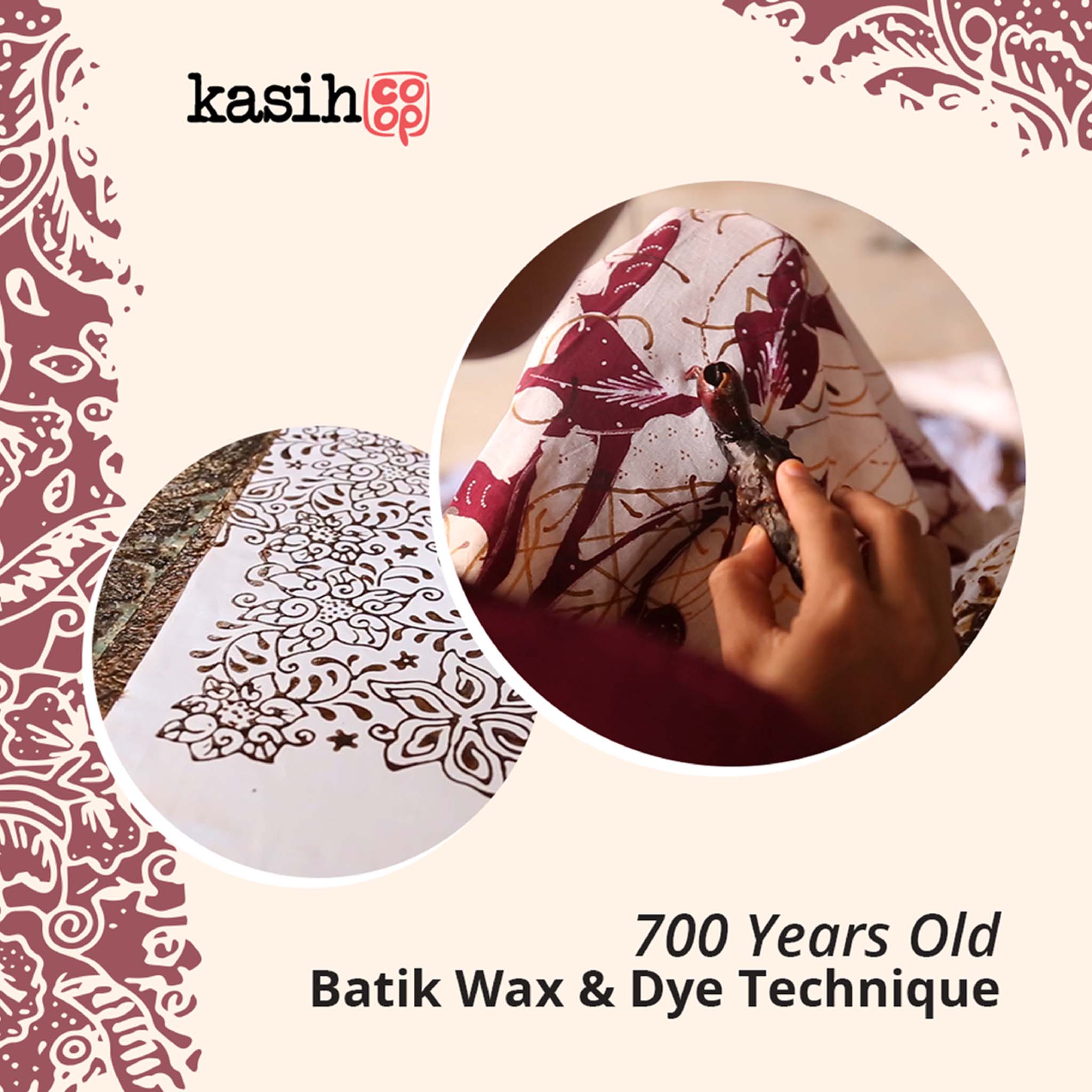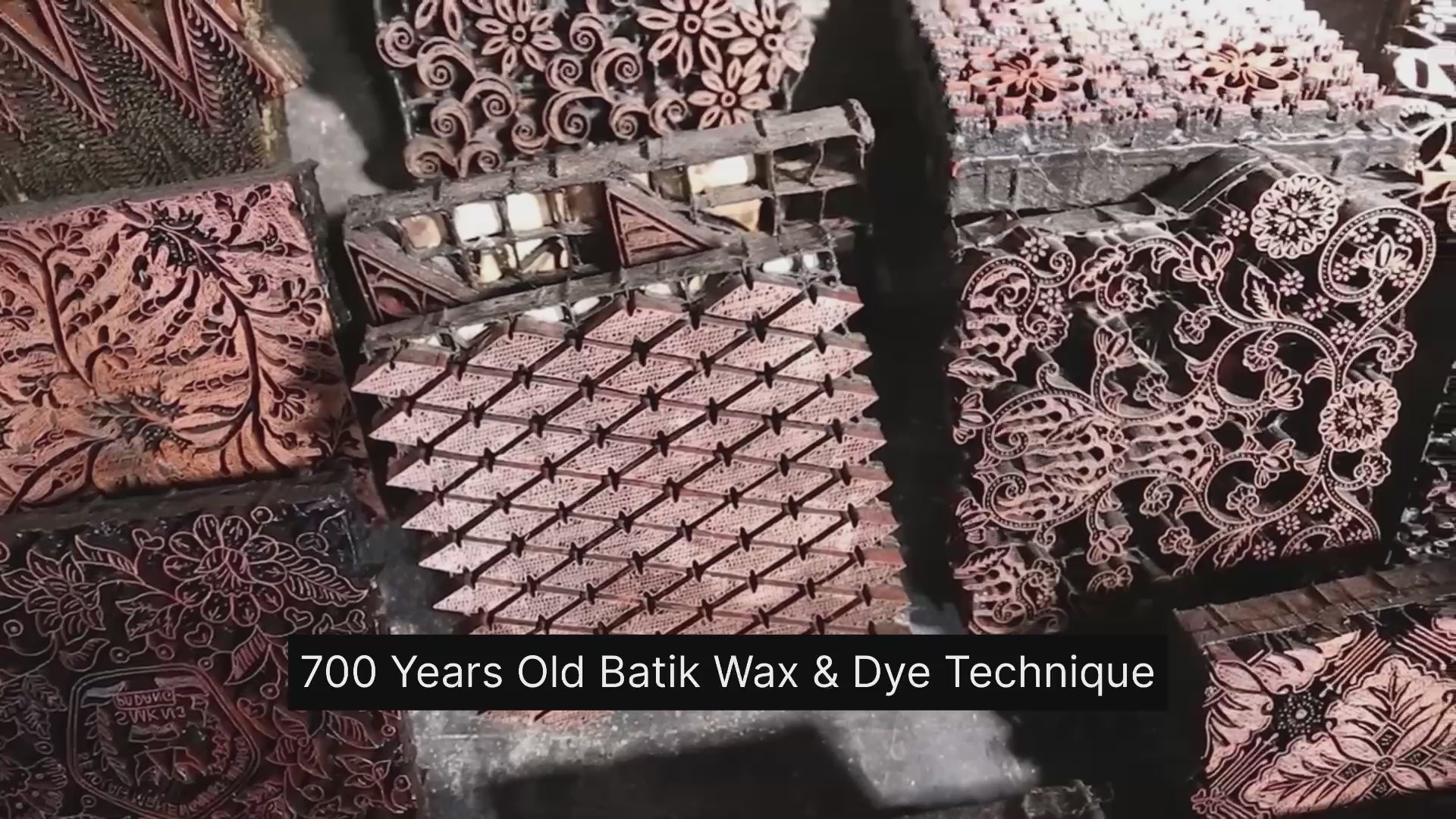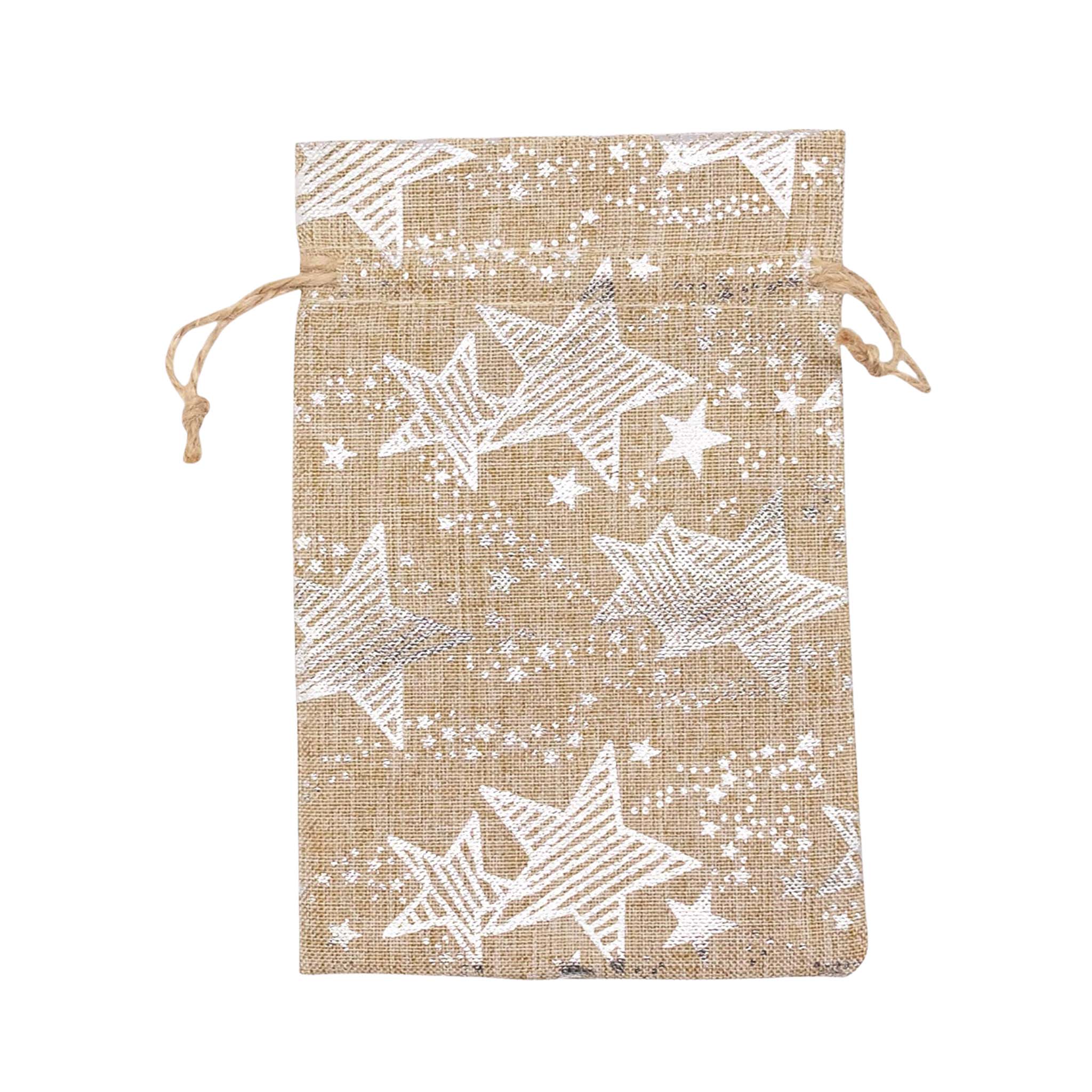Batik Bandana - Dong lompong, Batik fait main teint à la main
Impossible de charger la disponibilité pour le Service de retrait
Présentation du bandana Batik teint et estampillé à la main, une œuvre d'art portable vraiment unique et authentique. Fabriqué par des artisans qualifiés utilisant une technique de cire et de teinture batik vieille de 700 ans, ce bandana impressionnera à coup sûr.
Fabriqué à partir de tissu 100 % coton, ce bandana est à la fois doux et durable, avec un tissage plus serré qui offre une sensation plus substantielle que le tissu bandana traditionnel plus fin. Le tissu en coton blanc est estampé et teint à la main dans un magnifique motif Arbor, ce qui donne lieu à une œuvre d'art en tissu unique en son genre, cuite au soleil. Veuillez noter qu'en raison du processus de teinture à la main, vous devez vous attendre à une certaine variation de couleur, ce qui rend chaque bandana vraiment unique.
Mesurant 21,5" x 21,5", ce bandana est polyvalent et peut être porté de différentes manières. Utilisez-le comme bandana autour de votre cou, comme couvre-tête et cheveux, ou comme masque facial. Il est également idéal pour votre ami à quatre pattes, ce qui en fait un accessoire parfait pour votre chien de compagnie.
Facile d'entretien, ce bandana peut être lavé en machine à l'eau froide et séché à l'air libre. Pour conserver les couleurs éclatantes, il est recommandé de laver le batik séparément des autres vêtements.
Offrez-vous ou offrez à un être cher la beauté et le savoir-faire de ce bandana Batik teint et estampé à la main. Avec son design unique, sa qualité exceptionnelle et son utilisation polyvalente, c'est un accessoire indispensable pour tous ceux qui apprécient l'art des produits faits à la main.
Il s'agit d'un bandana batik teint et estampillé à la main, fabriqué à la main par des artisans.
-
Ce tissu est fabriqué à partir d'un tissu en coton étroitement tissé qui semble plus substantiel que le tissu bandana fluide et plus fin.
-
Ce bandana est fabriqué à partir de tissu de coton blanc qui est ensuite estampé et teint à la main selon une technique de cire et de teinture batik vieille de 700 ans. Le tissu batik est également ensuite cuit au soleil. Vous devez vous attendre à une certaine variation de couleur.
-
Ce modèle s'appelle Dong Lompong
-
Taille : 21,5"x21,5"
-
Fabriqué avec du tissu 100% coton
-
Lavable en machine à froid et séchage à l'air libre. Lavez le batik séparément des autres vêtements.
- Vous pouvez les porter comme bandana autour du cou, comme couvre-tête et cheveux ou comme masque facial.
- Également un superbe bandana pour votre chien de compagnie
Kasih Co-op shares the culture and craft of Indonesia's batik
Handcrafted 700 years old batik wax & resist technique
FAQ for Batik Scarves & Bandanas
What makes this a genuine Indonesian Batik, and how can I tell it’s not a mass-produced printed design?
Authentic Indonesian Batik is defined by the traditional wax-resist dye technique, a craft recognized by UNESCO. Our products are created using either Hand-Drawn (Batik Tulis) or Hand-Stamped (Batik Cap) methods.
The easiest way to confirm authenticity is by performing the "Double-Sided Check": Genuine batik colors and patterns are almost identical and equally vibrant on both the front and the back of the fabric, because the wax and dye fully penetrate the cloth. Printed imitations will show a bright front but a noticeably faded or indistinct back.
Why is Indonesian Batik considered a unique cultural heritage?
Indonesian Batik is far more than just fabric; it is a living tradition. In 2009, UNESCO recognized Indonesian Batik as a Masterpiece of the Oral and Intangible Heritage of Humanity.
The craft is deeply intertwined with the Indonesian cultural identity, spirituality, and visual storytelling, with techniques and symbolic meanings passed down through generations. Specific Javanese motifs, for instance, were historically reserved for royalty, adding layers of meaning to every thread.
What is the meaning behind the most popular Batik motifs like Parang, Kawung, or Mega Mendung?
Batik motifs function as a visual language, carrying deep philosophical meanings :
- Parang: This diagonal, wave-like pattern, originating in Central Java’s royal courts, symbolizes strength, continuity, and resilience.
- Kawung: One of the oldest motifs, based on intersecting circles (resembling the palm fruit), it symbolizes purity, justice, and is a reminder to never forget one's origins.
- Mega Mendung: This cloud pattern from Cirebon represents patience, calmness, and the expectation for the wearer to remain controlled and cool in handling problems.
How should I wash my Batik to ensure the colors do not fade and the fabric lasts?
Proper care ensures the longevity of your handcrafted item. Gentle is key :
- Washing: We strongly recommend hand washing in cold water. If you use a machine, select the delicate/gentle cycle and place the batik in a mesh bag.
- Detergent: Use a mild detergent. Never use chlorine bleach or strong detergents.
- Drying: Air-dry in the shade. Prolonged exposure to direct sunlight must be avoided as it causes color fading. Do not wring or twist the fabric.

